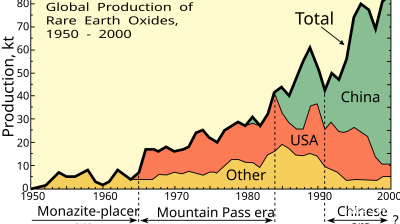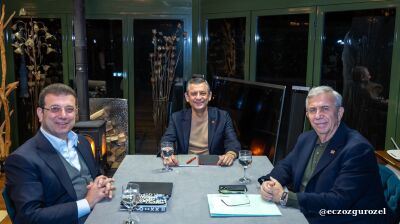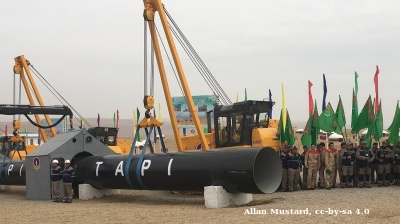 Russia’s dollar-denominated Russia Trading System (RTS) was one of the best three performing markets in the world in 2016, up 50% y/y, and while last year the market did less well (it was essentially flat) a raft of successful IPOs and SPOs showed that international portfolios’ interest has been piqued by the country’s economic recovery. UFG Asset Management is one of the largest Russia-dedicated multi-strategy fund managers, with institutional funds focused on private equity, public markets and real estate.
Russia’s dollar-denominated Russia Trading System (RTS) was one of the best three performing markets in the world in 2016, up 50% y/y, and while last year the market did less well (it was essentially flat) a raft of successful IPOs and SPOs showed that international portfolios’ interest has been piqued by the country’s economic recovery. UFG Asset Management is one of the largest Russia-dedicated multi-strategy fund managers, with institutional funds focused on private equity, public markets and real estate.
The private equity business is probably the most interesting and successful. It's about have a nose for fast growing companies and getting in early to help them out with growth capital. UFG’s portfolio has grown by 30% or more in dollar terms every year – even including 2014 when Russia annexed the Crimea and the value of oil prices and the ruble collapsed while most international investors were standing on the sidelines.
“We run two PE funds. One we raised just after the financial crisis in 2009-2010. The second one we raised in 2014 during the Crimea crisis. And we are now in the process of raising a third fund,” says Dominic Reed, UFG’s Private Equity partner, who has been with the firm since 2008. “Ironically, thinking back to 2010 when no one wanted to touch Russia, to date that fund has generated a gross internal rate [IRR] of return north of 40% on its investments. And the 2014 fund closed just as Crimea was annexed shortly followed by the ruble halving in value, but in dollar terms that fund is also currently running upwards of 30% gross IRR.”
The same story is repeated on the public markets, where UFG also runs one of Russia’s best performing public market funds. Its flagship fund was up 50% in 2016 and 24% in 2017, despite the overall lacklustre +0.3% performance of the benchmark MSCI Russia stock market index in 2017. The overall market was dull but at a corporate level there were many success stories as the best companies saw earnings soar and the process of consolidation in many sectors, catalysed by the crisis, continues.
This is the essence of what UFG and other funds are selling. There is a lot of noise and fury surrounding Russia, but at the end of the day it is a huge country with the largest population in Europe and is in the middle of a transformation from one system to a new one and that creates opportunities if you have the local team and knowledge. Reed has been in Russia since 1997 and UFG has been a leader in the Russian financial sector since 1994.
“It's a very hard message to get across to people outside the country, as Russia comes with a particular reputation and emotional baggage. But if you can look through all this and see what is going on the ground you can find very interesting high growth companies, run by outstanding entrepreneurs, and largely operating outside of the traditional Russian strategic sectors such as oil and gas” says Reed.
UFG’s Private Equity Funds focus on the mid-cap category where really spectacular growth can be found, focusing on the consumer sector, healthcare and pharmaceuticals, technology and the telecommunications sector
“The midmarket is the most interesting,” says Reed. “Forget the geopolitics, which are a distraction and often distorted. The real issue you need to address investing in Russia is its potential for volatility and susceptibility to outside shocks. If from one year to next the ruble drops but you have a business that can grow at 30-40% then this mitigates the downside while allowing you to capture the strong upside available in the market.”
A good example is UFG’s investment into Russian Towers, the largest independent tower company in Russia. Russia Towers is an infrastructure business that has been driven by the growth in mobile services and data over the last several years. The early days of mobile telephony in Russia was a straight race to cover the whole country by building towers everywhere and installing base stations to provide coverage. But, says Reed, “ it makes no sense for the operators to build in triplicate the capital-intensive ‘passive’ real estate of the telecoms towers, which in most markets globally are a shared resource. So Russian Towers has taken on this role, building the new generation of towers and poles as operators roll out their data networks, and buying back and leasing towers, freeing up the mobile operators’ resources to concentrate on their network upgrades and services to customers”. It is a classic developing market story and the company has enjoyed growth in double digits for several years.
This is a story that UFG has seen repeated in its other target sectors. UFG holds stakes in Russia’s largest consumer snacks manufacturer, KDV, which has seen consistent top line growth for the last five years, selling chocolates, crisps and other snacks, beating the global giants like Pepsico, and it now exports a whole line of confectionary to the Chinese market. UFG also owns shares in the Russian-made kids cartoon series “Masha and the Bear” which has turned into a global phenomenon equivalent to the UK’s "Peppa Pig" with more than 20bn views on YouTube – the largest non-English following online – and a worldwide distribution of its series, with associated toys and merchandising.

Foreign investors’ interest in Russia is starting to pick up again and currently in the public markets Russia is the second most overweight holding in the benchmark MSCI EM index. But almost all that overweight is concentrated in a handful of names, with state-owned retail banking giant Sberbank topping the list. Russia was sent to Coventry by investors following the annexation of the Crimea in 2014 and it has not really returned yet.
A yawning gap has opened up between the political story and what investors are looking at – and for the most part, those investors that take the trouble to look at Russia – still a minority – like what they see.
“Foreign investors are still coming to Russia and they have always been,” says Reed. "If you read the Western press then you’d assume everyone steers clear. But if you look at the corporate sector then in fact Russia has been and remains one of the key markets for multinationals operating in the broader Eurasia, consistently generating double digit growth and high profits. That is a function of its 143mn people, which makes it by far the largest market in the region.
“We have the Cokes, the IKEAs the Danones – all these consumer companies. And Russia has been highly profitable for them. It has been a very high growth market for many years. Even with sanctions, the rouble instability and collapse in 2015, these firms continue to see high levels of profitability, even if the growth has slowed down,” says Reed.
“The irony,” says Reed, “is that this is not replicated in the financial sector which, while it tends to see a lot of ‘hot’ flows of money, the longer-term patient capital investors required for private equity, who needs to commit over a 10-year cycle, misunderstand the short term risks and too often stay away. Frankly, they are missing an open goal.”
“At the end of the day a lot of these guys don't need to have a Russia strategy. They do have to have a Chinese strategy, but they don't necessarily need a Russia one. So the default position is to stay away,” says Reed.
The country’s poor press and own-goal PR disasters like the current spy scandal in the UK has depressed investment. The attempted assassination of Russian double agent Sergei Skripal in the UK has brought speculation over new sanctions being imposed on Russia. But recently investors have started to shrug this off, focusing more on an upcoming $3bn Eurobond issue that carries a fat premium thanks to Russia’s tarnished reputation, reports Bloomberg. On the corporate front fertiliser producer Phosagro just issued a $500mn Eurobond with the lowest yield on a corporate bond ever that was five-times oversubscribed, CEO Andrei Gurev told bne IntelliNews in a recent interview.
Ultimately for direct investors and the corporate sector Russia is simply too big to ignore. “It's a great secret. If you are making lot of money selling chocolate then you don't necessarily want someone else coming in and start competing against you. But it's a huge irony that you can make great money here as a business, but struggle to raise the funds from international investors to grow that business," says Reed.
Finally, unlike other EMs, Russia exit environment has been improving recently. KPMG statistics indicate that M&A deal values averaged over $75bn annually from 2013-2016 while the IPO window that can flap like a shutter in a gale, reopened in 2017 and is expected to be open this year too.
“Russia traditionally has offered reasonably good liquidity. If you need to exit a business at any point in the cycle there is typically sufficient money in the market and enough large domestic players to allow an exit. So you can get out,” says Reed. “IPO is another way and there are those foreign strategic investors that still want to enter the region.”
Features

Asian economies weigh their options amid fears of over-reliance on Chinese rare-earths
Just how control over these critical minerals plays out will be a long fought battle lasting decades, and one that will increasingly define Asia’s industrial future.

BEYOND THE BOSPORUS: Espionage claims thrown at Imamoglu mean relief at dismissal of CHP court case is short-lived
Wife of Erdogan opponent mocks regime, saying it is also alleged that her husband “set Rome on fire”. Demands investigation.

Turkmenistan’s TAPI gas pipeline takes off
Turkmenistan's 1,800km TAPI gas pipeline breaks ground after 30 years with first 14km completed into Afghanistan, aiming to deliver 33bcm annually to Pakistan and India by 2027 despite geopolitical hurdles.

Looking back: Prabowo’s first year of populism, growth, and the pursuit of sovereignty
His administration, which began with a promise of pragmatic reform and continuity, has in recent months leaned heavily on populist and interventionist economic policies.




